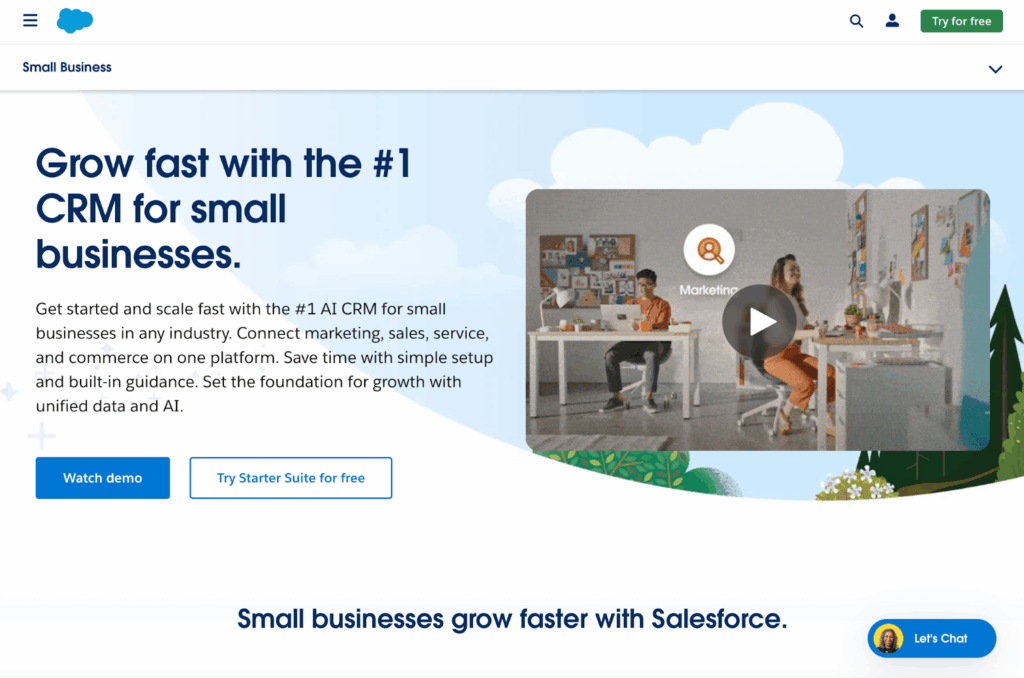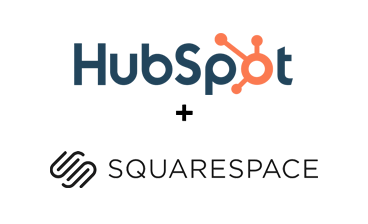Fortifying Your Fortress: A Comprehensive Guide to CRM Security for Small Businesses

In the dynamic landscape of modern business, particularly for small enterprises, customer relationship management (CRM) systems have become indispensable. They’re the digital backbone, the central nervous system, if you will, that manages interactions with existing and potential customers. But with this critical role comes a significant responsibility: security. Protecting sensitive customer data isn’t just a best practice; it’s a legal and ethical imperative. This in-depth guide delves into the crucial aspects of CRM security for small businesses, offering practical advice, real-world examples, and a roadmap to safeguard your most valuable asset: your customer relationships.
The Foundation: Understanding the Risks
Before we embark on the journey of securing your CRM, it’s vital to understand the threats lurking in the digital shadows. Small businesses, often perceived as less lucrative targets than large corporations, can unfortunately be just as vulnerable. Cybercriminals are constantly evolving their tactics, and they’re increasingly targeting smaller organizations due to their often-lax security measures.
Common Security Threats:
- Data Breaches: This is the nightmare scenario. A data breach occurs when sensitive customer information, such as names, addresses, contact details, financial records, and even health information, is accessed or stolen by unauthorized individuals. This can lead to significant financial losses, reputational damage, and legal repercussions.
- Malware Attacks: Malware, including viruses, Trojans, and ransomware, can infiltrate your CRM system through various means, such as phishing emails, malicious websites, or infected software. Once inside, malware can steal data, disrupt operations, or hold your system hostage.
- Phishing Scams: Phishing attacks involve deceptive emails or messages that trick employees into revealing sensitive information, such as usernames, passwords, or financial details. Cybercriminals often impersonate legitimate entities to gain the trust of their victims.
- Insider Threats: Not all threats come from external sources. Insider threats, whether intentional or unintentional, can pose a significant risk. This includes employees with malicious intent, those who make careless mistakes, or those who have access to more information than they need.
- Weak Passwords: Using weak or easily guessable passwords is like leaving the front door of your business wide open. Cybercriminals can easily crack weak passwords, giving them access to your CRM system and the sensitive data it contains.
- Lack of Encryption: Encryption is the process of converting data into an unreadable format, making it incomprehensible to unauthorized individuals. Without encryption, your data is vulnerable to interception and theft.
- Unsecured Third-Party Integrations: Integrating your CRM with other applications, such as marketing automation tools or payment gateways, can introduce security vulnerabilities if these integrations are not properly secured.
Understanding these risks is the first step toward building a robust security strategy. It’s like knowing the enemy before you go to battle. You can’t effectively defend against threats you don’t recognize.
Building a Secure CRM: Best Practices
Now that we’ve identified the risks, let’s explore the practical steps you can take to fortify your CRM system and protect your customer data. This section will cover essential best practices, ranging from password management to employee training.
1. Choose a Secure CRM Provider:
The foundation of your CRM security lies in the provider you choose. Not all CRM platforms are created equal when it comes to security. Look for a provider that:
- Employs Robust Security Measures: This includes features like data encryption, regular security audits, intrusion detection systems, and multi-factor authentication (MFA).
- Complies with Industry Standards: Ensure the provider complies with relevant regulations, such as GDPR (General Data Protection Regulation) and CCPA (California Consumer Privacy Act), depending on your location and customer base.
- Offers Regular Security Updates: A reputable provider will regularly update their platform to patch vulnerabilities and address emerging threats.
- Provides Detailed Documentation: Look for clear documentation on their security practices and how to configure your CRM for optimal security.
- Offers Excellent Customer Support: You need to be able to reach out to the provider if you have any questions or concerns about security.
Research different CRM providers, read reviews, and compare their security features before making a decision. Don’t just focus on the features; consider the provider’s track record and commitment to security.
2. Implement Strong Password Policies:
Passwords are the first line of defense. Enforce strong password policies across your organization. This includes:
- Minimum Password Length: Require a minimum password length of at least 12 characters, or even longer.
- Complexity Requirements: Passwords should include a combination of uppercase and lowercase letters, numbers, and special characters.
- Regular Password Changes: While not always necessary, consider requiring password changes every 90 days or so.
- Prohibit Password Reuse: Prevent employees from using the same password for multiple accounts.
- Use a Password Manager: Encourage employees to use password managers to generate and store strong, unique passwords.
Educate your employees about the importance of strong passwords and provide them with resources to create and manage their passwords effectively. Consider a password reset policy if an employee’s password is suspected of being compromised.
3. Enable Multi-Factor Authentication (MFA):
MFA adds an extra layer of security by requiring users to verify their identity using multiple factors. This typically involves something you know (password), something you have (a mobile device), and/or something you are (biometric data).
Enabling MFA makes it significantly harder for cybercriminals to access your CRM, even if they manage to obtain a user’s password. MFA can be implemented through various methods, such as:
- Mobile Authenticator Apps: Apps like Google Authenticator or Authy generate time-based one-time passwords (TOTP) that users enter to verify their identity.
- SMS Codes: Users receive a verification code via text message.
- Biometric Authentication: Some devices offer biometric authentication, such as fingerprint scanning or facial recognition.
Make MFA mandatory for all employees who access your CRM system.
4. Control User Access and Permissions:
Not all employees need access to all the data in your CRM. Implement a principle of least privilege, granting employees only the minimum level of access necessary to perform their job duties.
This involves:
- Role-Based Access Control (RBAC): Define different roles within your CRM system (e.g., sales representative, marketing manager, administrator) and assign specific permissions to each role.
- Regular Access Reviews: Periodically review user access and permissions to ensure they are still appropriate. Remove access for employees who no longer need it or who have left the company.
- Audit Trails: Enable audit trails to track user activity within your CRM system. This allows you to monitor who is accessing what data and when.
Carefully manage user accounts and permissions to prevent unauthorized access and minimize the potential damage from insider threats.
5. Encrypt Sensitive Data:
Encryption is a critical security measure that converts data into an unreadable format, protecting it from unauthorized access. Ensure that your CRM provider offers data encryption both in transit (when data is being transmitted) and at rest (when data is stored).
Consider encrypting sensitive fields, such as:
- Credit Card Information: If you store credit card details, encryption is mandatory.
- Social Security Numbers: Protect this sensitive information with encryption.
- Health Information: If you handle health data, encryption is essential.
Verify that your CRM provider uses strong encryption algorithms and keeps its encryption keys secure. If you are using third-party integrations, ensure they also use encryption.
6. Regularly Back Up Your Data:
Data backups are essential for disaster recovery. In the event of a data breach, system failure, or ransomware attack, you can restore your data from a backup.
Implement a robust backup strategy that includes:
- Regular Backups: Back up your CRM data frequently, ideally daily or even more often, depending on the volume of data and the rate of change.
- Offsite Backups: Store your backups offsite, in a secure location separate from your primary CRM system. This protects your data from physical disasters, such as fire or flood.
- Test Your Backups: Regularly test your backups to ensure they are working correctly and that you can restore your data successfully.
- Automated Backups: Automate your backup process to reduce the risk of human error and ensure backups are performed consistently.
Your backup strategy should be a core component of your overall security plan.
7. Secure Your Network:
Your network is the gateway to your CRM system. Secure your network infrastructure to prevent unauthorized access.
This involves:
- Firewalls: Install and configure firewalls to control network traffic and block malicious activity.
- Intrusion Detection and Prevention Systems (IDS/IPS): Implement IDS/IPS to detect and prevent unauthorized access attempts.
- Wireless Security: Secure your Wi-Fi network with strong passwords and encryption. Consider using a guest network for visitors.
- Regular Network Scans: Conduct regular network scans to identify vulnerabilities and security weaknesses.
- Update Your Router’s Firmware: Keep your router’s firmware up-to-date to patch security vulnerabilities.
A secure network forms a crucial layer of defense for your CRM system.
8. Secure Third-Party Integrations:
Integrating your CRM with other applications can enhance its functionality, but it can also introduce security risks. Carefully vet all third-party integrations and ensure they meet your security standards.
This includes:
- Due Diligence: Research the security practices of any third-party providers you intend to integrate with.
- Data Security Agreements: Establish data security agreements with third-party providers to define their responsibilities for protecting your data.
- Regular Security Assessments: Conduct regular security assessments of your integrations to identify and address vulnerabilities.
- Minimize Data Sharing: Only share the minimum amount of data necessary with third-party integrations.
Carefully manage and secure your third-party integrations to prevent them from becoming a weak link in your security chain.
9. Train Your Employees:
Your employees are your first line of defense. Provide comprehensive security training to all employees who access your CRM system.
This training should cover:
- Password Security: Teach employees about strong password practices and the importance of not sharing passwords.
- Phishing Awareness: Educate employees on how to identify and avoid phishing scams.
- Social Engineering: Explain how cybercriminals use social engineering tactics to trick employees into revealing sensitive information.
- Data Privacy: Train employees on data privacy regulations and the importance of protecting customer data.
- Reporting Security Incidents: Explain how employees should report any security incidents or suspicious activity.
Conduct regular security awareness training to keep employees informed about the latest threats and best practices. Make this an ongoing part of your company culture.
10. Implement a Security Incident Response Plan:
Even with the best security measures in place, security incidents can still happen. Develop a security incident response plan to address these incidents effectively.
Your plan should include:
- Incident Detection and Reporting: Define procedures for detecting and reporting security incidents.
- Incident Containment: Outline steps to contain a security incident and prevent further damage.
- Incident Eradication: Describe how to remove the cause of the incident.
- Incident Recovery: Detail the steps to restore your systems and data.
- Post-Incident Analysis: Explain how to analyze the incident to identify areas for improvement and prevent future incidents.
- Communication Plan: Establish a communication plan to notify stakeholders, including customers, regulators, and the public, if necessary.
Regularly test your incident response plan to ensure it is effective.
Staying Ahead of the Curve: Continuous Improvement
CRM security is not a one-time project; it’s an ongoing process. Cyber threats are constantly evolving, so your security measures must also adapt.
1. Conduct Regular Security Audits:
Regular security audits help you identify vulnerabilities and weaknesses in your CRM system. Hire a qualified security professional to conduct these audits or use internal resources if you have them.
Audits should cover:
- Vulnerability Scanning: Identify potential vulnerabilities in your system.
- Penetration Testing: Simulate a cyberattack to test your defenses.
- Compliance Checks: Verify compliance with relevant regulations.
Address any findings from the audit promptly.
2. Stay Informed About the Latest Threats:
Cybersecurity is a dynamic field. Stay informed about the latest threats and vulnerabilities by:
- Following Industry News: Read industry publications, blogs, and security alerts.
- Attending Webinars and Conferences: Participate in webinars and conferences to learn about the latest trends and best practices.
- Joining Security Communities: Join online communities and forums to share information and learn from others.
- Subscribing to Security Alerts: Subscribe to security alerts from your CRM provider, security vendors, and industry organizations.
Continuous learning is essential to staying ahead of cyber threats.
3. Regularly Review and Update Your Security Policies:
Your security policies should be reviewed and updated regularly to reflect changes in your business, the threat landscape, and industry best practices.
This includes reviewing and updating:
- Password Policies: Review your password policies to ensure they are still effective.
- Access Control Policies: Review your access control policies to ensure they are still appropriate.
- Data Privacy Policies: Review your data privacy policies to ensure they comply with relevant regulations.
- Incident Response Plan: Review and update your incident response plan to ensure it is up-to-date.
Make sure your security policies are communicated to all employees and that they understand their responsibilities.
4. Consider Cyber Insurance:
Cyber insurance can help mitigate the financial impact of a data breach or other security incident. Cyber insurance policies typically cover:
- Data Breach Response Costs: The costs associated with investigating a data breach, notifying affected individuals, and providing credit monitoring services.
- Legal Fees: The costs of defending against lawsuits arising from a data breach.
- Business Interruption Losses: The lost revenue resulting from a security incident that disrupts your business operations.
- Ransomware Payments: In some cases, cyber insurance may cover ransomware payments.
Evaluate the cost and benefits of cyber insurance to determine if it’s a worthwhile investment for your business.
Conclusion: Prioritizing Security for a Thriving Business
Securing your CRM system is not just a technical requirement; it’s a crucial business strategy. By implementing the best practices outlined in this guide, you can protect your customer data, build trust, and safeguard your business from the devastating consequences of a data breach. Remember that security is an ongoing journey, not a destination. Embrace a culture of continuous improvement, stay informed about the latest threats, and proactively adapt your security measures to protect your valuable customer relationships. In today’s digital landscape, a secure CRM is not just a luxury; it’s the bedrock of a successful and sustainable small business.




